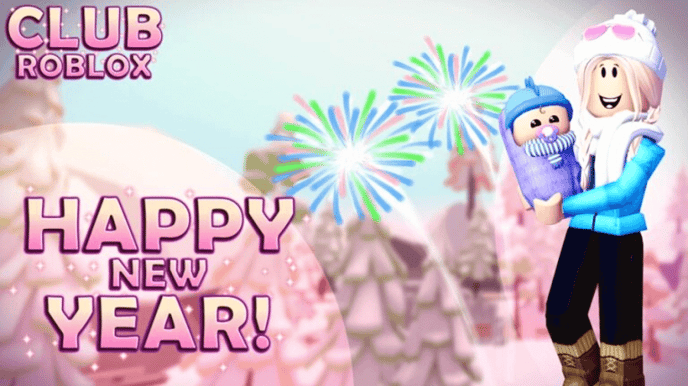
Limited-Time Fun: Roblox Events and Collaborations
Posted by Steve Davies October 25th, 2024
When it comes to Roblox, this isn’t just a gaming platform—it’s a social network, a marketplace, a cultural phenomenon, and increasingly, a stage for collaborations that drive engagement, keep the platform relevant, and redefine what it means to be an interactive event. Roblox events and limited-time collaborations have become central to the platform’s identity, creating moments of frenzy and exclusivity that rival major media launches and even headline news.
The Mechanics of Limited-Time Engagement
At the heart of Roblox events is a formula built on scarcity and timing. A limited-time event is exactly what it sounds like: a short, unpredictable period where players can access exclusive content, participate in special challenges, or earn unique items—once they’re gone, they’re gone. This “scarcity model” is not new; it’s long been a staple of marketing. But Roblox has taken it a step further, creating a culture around these temporary events that taps into the psychology of FOMO (fear of missing out) and transforms ordinary gameplay into high-stakes interactions.
These events range from simple scavenger hunts to full-blown collaborations with major brands and franchises. Recent Roblox partnerships with household names like Gucci, Nike, and Stranger Things show how much value these limited-time experiences carry—not just in player engagement but in real-world branding. Roblox has turned the virtual landscape into a desirable platform for companies looking to market in a way that resonates with younger audiences, where traditional advertising just won’t do.
Behind the Curtains: Big Brands and Bigger Agendas
What’s clear is that these collaborations don’t happen by accident. Sources within Roblox have indicated that the platform carefully curates its brand partnerships, aligning itself only with entities that complement its image and resonate with its user base. Industry insiders point to these collaborations as a highly strategic move that’s more than just fun and games—it’s a calculated business model with profitability and user retention at its core.
For example, a recent Roblox event in partnership with Nike didn’t just feature virtual shoes. It created a fully branded, interactive world where players could explore, earn limited-edition gear, and engage with the brand in ways that traditional advertising couldn’t achieve. These partnerships generate enormous engagement, keep users coming back, and build excitement around future collaborations. And for brands, it’s an invaluable opportunity to enter the digital space, connecting with an elusive demographic through immersion rather than interruption.
The Player Response: Hype, Fandom, and Real-World Value
The response to these events among Roblox users is palpable and instantaneous. Social media lights up, fan pages buzz with speculation, and YouTube creators rush to publish guides on how to unlock the latest exclusive items. It’s a phenomenon fueled by a unique blend of player investment and in-game economy. The limited-time nature of these events ensures that players feel an urgency to log in, participate, and collect items that will soon be unavailable, boosting engagement in a way that few game platforms have achieved.
What makes these events stand out is that they aren’t simply new “content drops”—they carry a value beyond the screen. Items obtained through collaborations become status symbols, markers of a player’s involvement in the Roblox community. Once an event is over, the items acquired—whether it’s a rare backpack from the Stranger Things event or a branded Gucci accessory—hold real-world value within the Roblox economy. They can be traded, sold, and sought after, creating a secondary market where these items are more than just pixels; they’re assets.
A Cultural Shift: Roblox Events as Generational Milestones
For Roblox users, especially its younger players, these events become more than just games—they’re moments, almost cultural milestones. Unlike traditional forms of entertainment, where viewers or fans are passive recipients, Roblox players are active participants in these events. When Roblox hosted a virtual concert, millions of players joined, not simply watching but becoming part of the experience.
In some ways, these events are a microcosm of how entertainment is evolving. Traditional boundaries between media consumption and interactivity are dissolving, and Roblox has positioned itself at the forefront of this change. The limited-time events and collaborations in Roblox aren’t just short-lived gaming activities; they’re an evolving experiment in how the next generation might connect, consume, and experience culture.
The Bottom Line
Roblox events and collaborations reflect a business model that understands the demands of a constantly shifting digital landscape. With the allure of exclusivity, strategic partnerships, and immersive engagement, Roblox has tapped into a formula that makes it a leader in the evolving gaming and entertainment space. What remains to be seen is how far this formula can go—how it may transform, grow, and adapt as both the platform and its user base mature.
For now, Roblox continues to be a world of fleeting moments, where players are always on the lookout for the next big event, the next exclusive item, the next chance to make their mark. And for Roblox and its brand partners, that’s precisely the goal.